Why Cambodia? Why now?
The Academy-Award-winning 1984 movie, The Killing Fields, exposed a whole new generation to the horrors of those years. As late as the mid 90’s, Cambodia was really only home to foreign journalists, UN workers and hopeful NGOs, visited by a small smattering of the most hardcore backpackers.
Even in the early 2000s when I moved to Cambodia, it was regarded by most as a charmless blip on the Banana Pancake Trail, worth perhaps a couple of days in Siem Reap to see the magnificent Angkor temples, but in general, lacking the glitz of anything-goes Bangkok or the seductive beaches of Thailand’s southern coast, the cool factor of Vietnam, or the natural beauty of underdeveloped Laos.
Controlling Costs in Cambodia
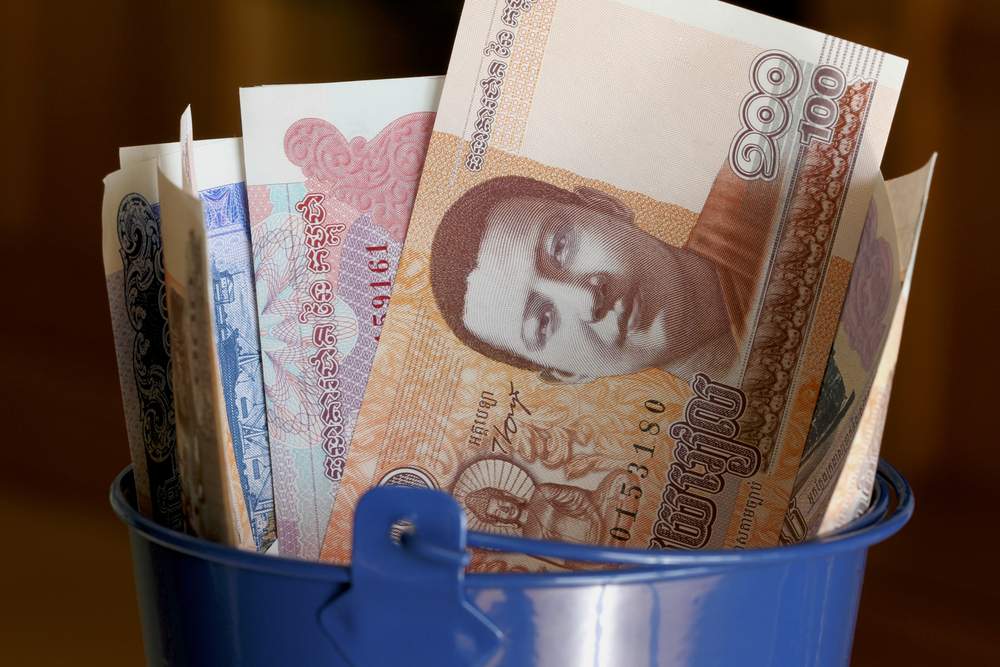
Places to See in Cambodia

Siem Reap: The name of the town as well as the province, Siem Reap is where the magical 1,000+ year old temples of Angkor are located. The Angkor Archaeological Park has dozens of temples you’ve probably seen photos of, including Bayon (famous for its faces), Ta Prohm (where massive tree roots have impressively reclaimed some of the temple ruins) and of course, the five spires of Angkor Wat. Together they represent a feat of modern engineering from olden times, every inch as impressive as the Taj Mahal or Machu Picchu.
Thanks to tremendous preservation efforts led by the French, some of the bas-reliefs are still striking in their detail. As Cambodia’s most visited destination Siem Reap offers a wide range of accommodation options and trendy cafes with a decidedly chill vibe.
Some day trips from Phnom Penh include the zoo at Takhmau, about a two-hour drive away, or Silk Island (Koh Dach), about an hour’s trip up the Mekong River by boat (also accessible by motorbike). Other than the weaving village on the Island, there are huts set up by the water for a relaxing day of playing cards, lazing around in a hammock or splashing in the shallow river.
Sihanoukville: Also known as Kampong Som by locals, Sihanoukville is Cambodia’s premier beach destination (about a 3-4 hour bus ride from Phnom Penh), with numerous beaches, some offshore islands, and a chill beach vibe.
Day trips to some of the nearby islands with very clear water are popular, and if you’re traveling in a group, chartering your own boat for the day is a viable option. If you want to live it up, the 5-star Sokha Beach Resort has a very clean, pretty stretch of beach where vendors aren’t allowed.
Anyone can access the beach via the hotel, but chairs are for hotel guests only. I’ve been there when the beach attendant has let me pay a couple of dollars to use a chair and others when they said it wasn’t allowed. Just beyond the hotel grounds, there is a public beach. Bring your own towels and straw mats.
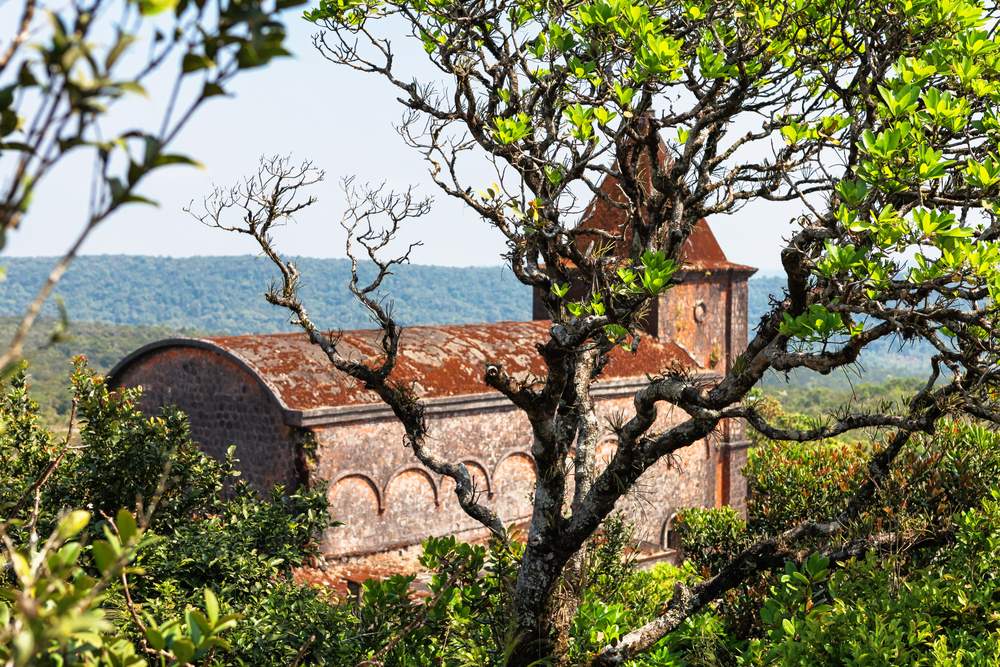
At one point, Kep was Cambodia’s “it” beach destination for the rich and famous but has since fallen into a state of slight disrepair that’s charming in its own way. The beaches in town aren’t all that inviting, so it’s more of a place to relax and do nothing except listen to the waves rolling from a hammock while gorging yourself on fresh seafood from the “Crab Market,” a row of a dozen or so shacks on stilts serving made-to-order seafood.
Crab are kept alive in a large pot kept in the sea, until its pulled in when you order. A huge plate of tamarind crab to share will set you back a measly $5-6USD. For swimming, take a trip to Rabbit Island on a day when the sea isn’t too choppy.
Koh Kong: Known more as a gateway to the Thai island of Koh Chang and beyond, Koh Kong is starting to develop an eco-tourism vibe with the Cardamom Mountains providing nature’s playground for bird watching, trekking, and river trips. Or if orangutan and dolphin shows are your thing, Safari World might interest you.
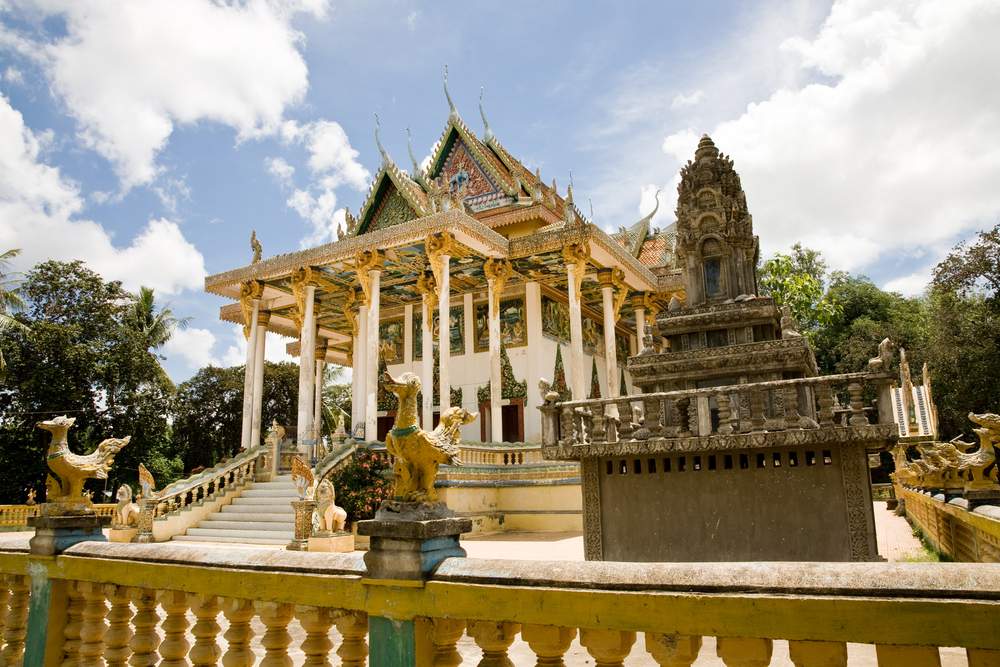
Ratanakiri: Hilly Ratanakiri doesn’t get many foreign tourists, but Cambodians all seem to want to visit for how different it is to the rest of the country. Best known for its gem mining area (which is why rubies, sapphires and emeralds are a very good buy in Cambodia as long as you go with someone knowledgeable), there are also 60,000 minority peoples in the province. Visiting them can be an authentic joy as they haven’t been jaded by the onslaught of tourists like the hill tribes of Chiang Mai or the Hmong of Luang Prabang.
Kratie: Situated on the Mekong River, the main reason to visit this sleepy town (or more accurately, the village of Kampi, about 10 miles outside of Kratie) is to see the Irrawaddy dolphins. With less than 100 of these shy Mekong dolphins left, now is the time to go. But don’t expect them leap out of the water or even come remotely close to your boat like their ocean-dwelling cousins.
These are just a few of the many places Cambodia has to offer. Another option is venturing 20 minutes outside of a city center and wander around watching people grind rice to make crepes or kids playing with homemade toys. Whatever your interests, Cambodia is ripe for Indie travel now.
Food in Cambodia
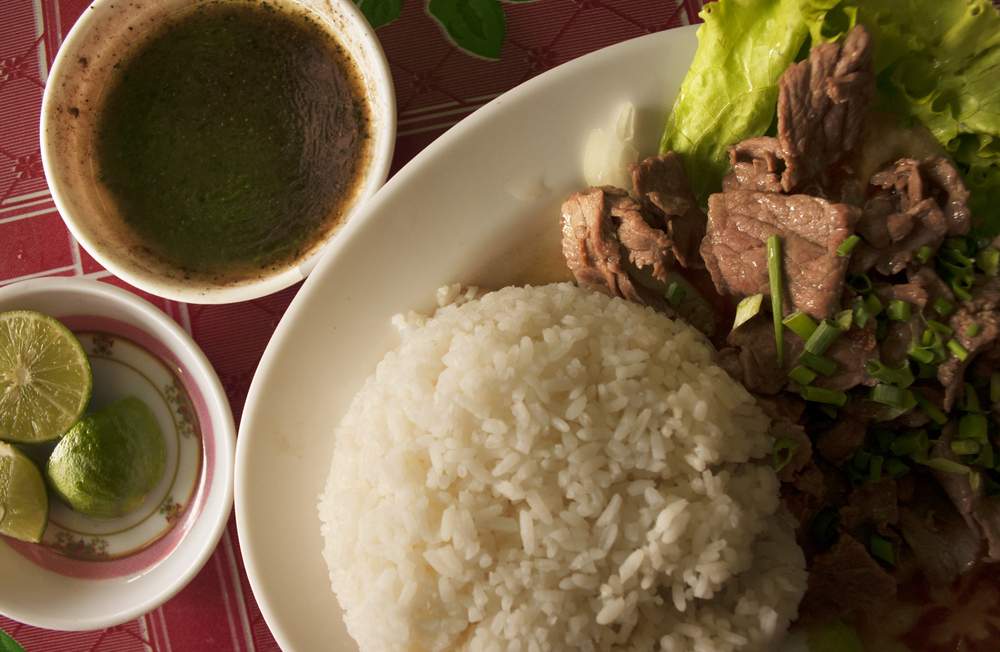
From the Vietnamese, the Khmer have adopted the sweet and sour tamarind-based soup (actually calling it somlor machu Yuun, literally “Vietnamese sour soup”), sizzling pancakes stuffed with pork and shrimp (banh cheo), and bai saich charouk¸ or rice with grilled pork. You’ll also see carts selling papaya salad (in Khmer bok lahong) which is very similar to the Thai som tam, and in restaurants, you can order Thai style chicken with cashew nuts or a spicy Tom Yam hotpot.
Food carts are also great for a quick bite, although only some of them will be equipped with small (read, tiny) plastic chairs for you to sit on. If you don’t see chairs, that means the food’s meant to be taken to-go. Feel free to find a shady spot somewhere to wolf down your loc cha (fried short noodles, usually with a few slices of beef, some bean sprouts, leafy greens, and a fried egg) or mi cha (similar, but made with instant noodles). Both are great snacks for about $1USD.
Getting Around

Buses: There isn’t one big bus station in Phnom Penh, nor are there are municipal buses like you have in Bangkok and Vietnam. Buses from various companies leave from everywhere: their own offices, from parking lots near big markets, or you can arrange to be picked up en route. Some of the larger companies that I’ve used include Sorya Transport buses (with a bus station just a block southwest of Psar Thmey, aka Central Market), Mekong Express, GST, and Capitol.
Capitol is probably the most foreigner-friendly, as their staff speak good English and their office is located right across from Psar Orussey market.
If you’re headed to Ho Chi Minh City, the choice of bus companies doubles as many Vietnamese-owned companies do this route, some with fleets of only a few buses to much bigger companies.
Tuk-tuks: Tuk-tuks only arrived on the scene a few years ago, but now they’re quite common. Expect to pay $2 for short trips and $10 for half a day. If you’re heading out to the Killing Fields (which are about 10 miles outside of Phnom Penh), you’ll need to pay more to traverse the bumpy road there.
Motodup: Motorcycle taxis are known as motodups. (Dup means to carry someone as a passenger, possibly coming from the French, double). Same negotiation rules apply. Just be aware that most Cambodian tuk-tuk and motodup drivers don’t read maps. Many of them are from the countryside, especially the motodup drivers. Instead of noting a location the way Westerners would (Street X at the corner of Y), they know places by the name of the neighborhood (which unfortunately, you won’t find on any map) or markets.
If you’re not going to a very well known tourist spot, have your hotel write down the name of the area. It’s best to also have a cell phone where you can call someone at your destination and have them explain it to the driver. This goes for getting back to your hotel as well. Phnom Penh’s streets are numbered (even numbers go east-west, odd are north-south), so it’s usually pretty easy to follow along on a map.
It’s not impossible to have three (or more) on a motorbike, but if you’re “Western-sized”, you probably won’t be comfortable with three, as the seat is typically quite short. You’re better off getting two bikes to travel together. Just make sure the “together” part is clear to the drivers. Few things are as frustrating as getting separated in a city where most people do not speak English.
While violent crime isn’t common, bag snatchings are, especially before large holidays when teens want money to spend, so keep your bag between you and the driver, not slung loosely on your back. I’ve heard stories of foreigners who have gotten off the moto at their destination, only for the driver to drive off with their bag. It’s not common, but it has been known to happen. Just to be safe, when you get to your destination, have the driver put your belongings on the ground before you get off.
The ramork is the motodup’s larger cousin, a motorbike outfitted with a wooden wagon with benches. These can seat up to two dozen people and are used mainly to ferry people to the city limits. However, be aware that if a ramork gets into an accident, everyone goes flying. Cars tend to drive very fast on roads outside of the city, so when you can opt for a taxi over a ramork or even a motodup.
Taxis: Surprisingly, metered taxis haven’t really caught on in Cambodia, at least not for rides within the city. In Phnom Penh, you’ll see two main companies (Global and Choice) but usually only in the touristy areas. Otherwise, don’t expect a few to whiz by every few minutes like in Ho Chi Minh City or Bangkok. Of course, you can always phone them to come pick you up.
Just be forewarned that a Cambodian “seat” means four people in the back, two in the front passenger side and sometimes one person who sits WITH the taxi driver in his seat, with the driver reaching over to change gears. When I traveled by taxi, I always bought “two” seats so I could sit in the front passenger seat alone, but with the plethora of buses available nowadays, I’d recommend buses over taxis unless you’re in a severe time crunch.
Of course if you’re traveling in a group of 4, hiring out a whole taxi can be a comfortable, fast way to travel, but expect to pay quite a bit more than what the bus tickets would have cost.
Cyclos: Cyclos are mainly used by housewives returning from the market with bags of groceries or carting furniture from one place to another, a cheaper alternative to the tuk-tuk. I’ve seen foreigners on them for the slow thrill, but other than cruising around the riverside perhaps, I never found it to be all that relaxing and I always felt strangely guilty sitting in one while some wiry old man pedaled me around. Again, negotiate your price before getting on and have a bit of compassion for the drivers, who are often the poorest of the poor. I’ve seen quite a few sleep in their cyclos at night, parked along a wall somewhere.
Air: A handful of big name Asian airlines fly in and out of Cambodia, like Thai, Vietnam, and Malaysia. Certain routes have no competition and remain expensive like the Phnom Penh – Ho Chi Minh City leg or the Siem Reap – Bangkok leg. Luckily, Phnom Penh to Ho Chi Minh only takes 6 hours by bus (~$12USD one way). Siem Reap to Bangkok overland is a long journey, compounded by lethargic immigration officials at the border. My favorite choices for budget airlines are JetStar for cheap flights to Singapore and AirAsia, which currently flies from Phnom Penh to Bangkok or Kuala Lumpur and from Siem Reap to Kuala Lumpur.
Accommodation
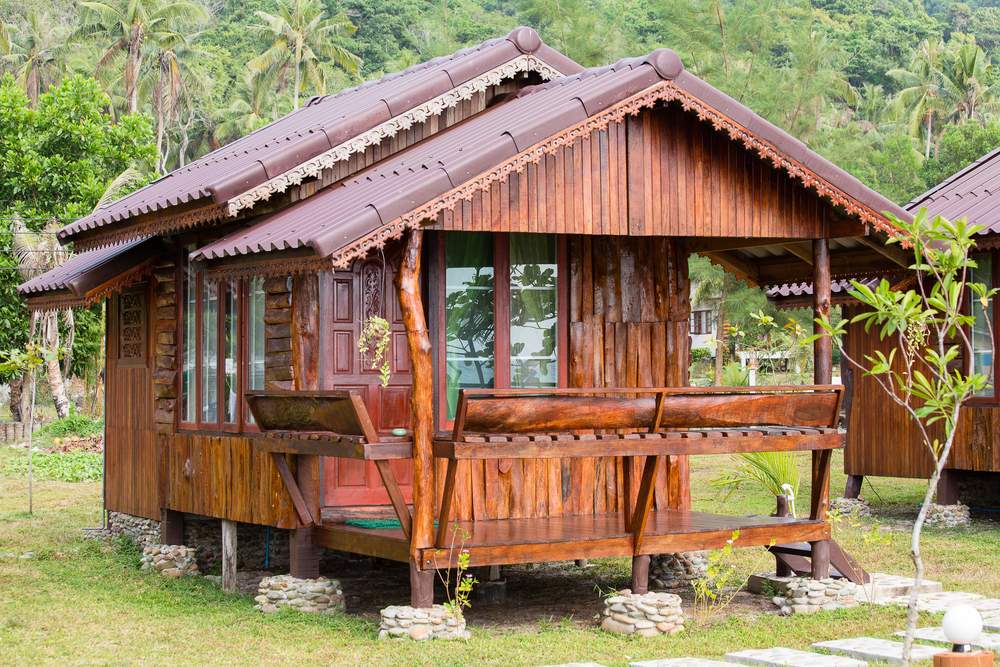
Less than $2: The cheapest (and grittiest) places I’ve ever seen have been spartan bamboo beds in the back room of someone’s house, using shared, equally spartan toilets. These signless, nameless places are located near big markets in towns near the borders with Vietnam/Thailand, and almost exclusively host traveling vendors from those countries just looking for a cheap place to spend the night. You’ll have no privacy and people will be walking in and out. They can take anyone, but they’re really surprised to see foreigners. The going rate is about 5,000 riels ($1.25USD). If you’re game, try asking for
$5-10: Dorm rooms aren’t very common in Cambodia, especially in properties operated by the average Khmer. The concept just hasn’t caught on with locals. But in most of the major cities, you’ll find expat-run hostels, and for about $7, you will be able to find a dorm room with shared bath. In this same range, you’ll be able to find very spartan private fan-cooled rooms at Khmer-run hotels.
Once you hit the $15 mark, expect to find a clean room with a TV (still spartan, though!) and breakfast included. I’ve never been a fan of these “free” breakfasts. The menu is usually limited and not nearly as good as can be found out on the streets for a dollar or two. I’d venture to say that “free breakfast” isn’t the value-for-money that it might be at a higher-end property. When negotiating your best price, see if the owner will take off $2 or so per night if you skip breakfast!
At the luxury end, you’ll get more value for your money than in most other countries. Raffles, InterContinental, etc. will usually be 20% cheaper or more than other properties in the same chain here.
Some things to think about as you’re choosing accommodation:
- Some of the cheaper places may be in residential neighborhoods. That means there may be mobile carts selling food during the day (and especially around breakfast time) but fewer choices as the day wears on. You’ll also need to think about how easy/difficult it will be to direct someone back to your hotel at the end of the day.
- Consider staying near markets and/or the riverside. Most cities visited by tourists in Cambodia will be on the banks of a river, which is traditionally a spot where everyone, young and old, gathers to do early morning exercise, late afternoon hanging out, and weekend fun.
- Bargaining for room rates is acceptable. Most Cambodian-run hotels will probably not have a price list, and even if they do, you’ll likely be able to shave a few dollars off, especially if you’re staying for more than one night.
- Bathrooms are often a shower/toilet combo. It’s expected that you’ll get water everywhere. Just make sure the toilet paper is protected before you shower.
- Having wifi at the hotel isn’t that important. Find a cheap internet cafe instead, for about $1 per hour of connection.
- Expect to pay more during Cambodian public holidays. The ones which are 3 days or longer are heavy travel periods for Khmers going back to visit family in the provinces. Hotel rates to double during those times, and you might have a hard time finding a place to stay.
Why Indie travel to Cambodia?
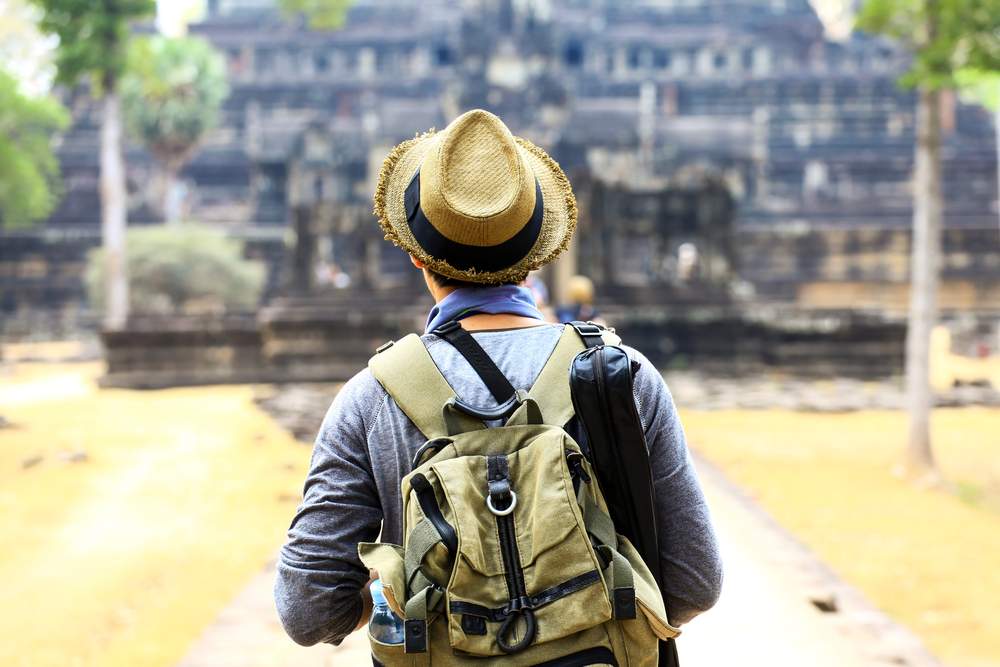
- Cambodia’s slightly more developed than Laos, although cities are nowhere near as frenetic as Ho Chi Minh City or Bangkok. Towns are small (even in Phnom Penh nowhere is really more than 20 minutes away), and outside of Siem Reap, you don’t see lots of tourists walking around (with the exception of the riverside at Phnom Penh).
- The people of Cambodia have obviously seen an increasing number of tourists for the last 10 years or so but aren’t overawed or aggressively selling to them. It’s almost a laissez-faire attitude, which is refreshing.
- While most of Cambodia doesn’t get the number of tourists needed to spawn the cutthroat competition that so often results in cheap package tours, the good news is that with a combination of transport options, almost every destination is accessible and relatively cheap to reach.
- Costs are relatively low, on par with travel in Vietnam. Admission to museums and monuments typically cost $3USD or less, with Angkor being the notable exception, where passes are pricey but costs go towards conservation (one-day passes are $20USD, three-day are $40 and seven-day are $60). I always found the three-day to be the best value, as you aren’t “templed out” after 24 hours of trying to cram in all of the major sights.
- Interaction with people is an important part of indie travel. In Cambodia, people have more time than money, so it’s not difficult to strike up conversations with school/university aged kids just hanging out by the riverside or at the park. Cambodian children all learn English at school, and many university programs are conducted in half English, half Khmer, so the younger generation speaks surprisingly good English. Also, because many English sounds exist in Cambodian (with 33 consonants and a host of dependent and independent vowels), Khmers have very good English pronunciation when compared to other SE Asian peoples.
- There are lots of opportunities to support NGOs. Because of the severity of the damage caused by the Khmer Rouge, Cambodia needed a lot of outside from the late 70s. In the past decade, I’ve seen more and more NGOs transferring into the hands of actual Cambodians ― Khmers helping Khmers. Connecting with some of these organizations by donating time, skills or money can make a real difference.
It’s as easy as buying something from the restaurants or boutiques of Mith Samlanh, an organization working with street children and their families, or from Tooit Tooit, a small stall in Phnom Penh’s Russian market that sells items made by disadvantaged families so their children can go to school instead of beg on the streets.
If you have more time, check out how you can help NGOs like Youth Star, who encourage volunteering among university graduates. You can also visit the schools of Pour un Sourire d’Enfant, an organization that works with the children forced to rummage through the huge garbage dump on the outskirts of Phnom Penh. A good resource is Stay Another Day, a downloadable booklet (last updated 2011-2012) listing many of the non-governmental organizations and socially-conscious businesses in Cambodia.
If your idea of a good trip is to seek pleasure in simple moments and details, then Cambodia is where you want to be.
Check out the following articles and resources to help plan your trip to Cambodia:
Photo credits: shutterstock.com, Ayotography / shutterstock.com, Michael Leslie / shutterstock.com, Vixit / shutterstock.com, alionabirukova / shutterstock.com, imagesef / shutterstock.com, Gougnaf / shutterstock.com, Kuba Barzycki / shutterstock.com, OlegD / shutterstock.com, Twinsterphoto.
